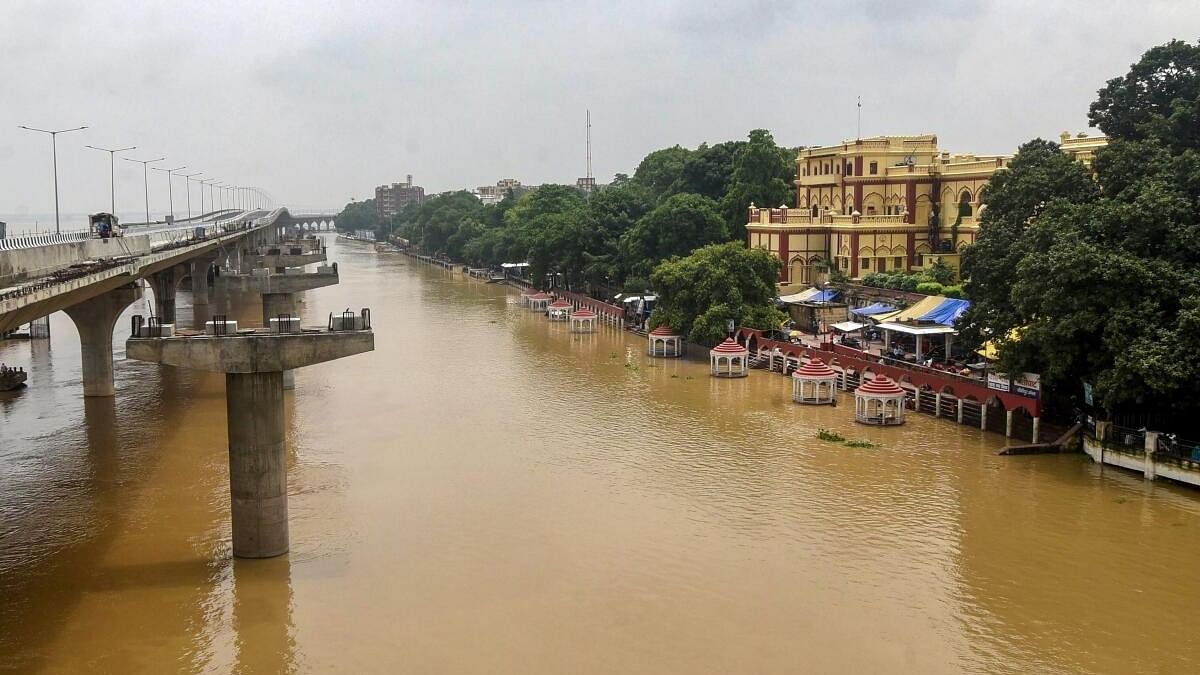
River Ganga in Patna, Bihar.
Credit: PTI File Photo
New Delhi: The National Green Tribunal while hearing a matter related to the prevention and control of pollution in the Ganga in Bihar has observed there is a huge gap when it came to correctly treating sewage waste discharge into the river. It also mentioned that sewage was being treated only in two districts.
Seeking a fresh report from Bihar’s 38 districts pertaining to the river's pollution, the NGT observed that 'not even a single effective step' had been taken by the state authorities to demarcate the floodplain zone of river Ganga and its tributaries.
The tribunal also quizzed the National Mission for Clean Ganga (NMCG) regarding why a sewage treatment plant worth Rs 824 crore was allowed to be constructed in a flood and cyclone-prone area.
A bench of NGT chairperson Justice Prakash Shrivastava noted a summary of the status of the district-wise waste treatment in the state and said, "The above report clearly reflects a huge gap in the treatment of sewage generated along with other waste from different sources which may be a cause for the high level of pollution of river Ganga and the tributaries."
The estimated sewage generation in the state was 1,700 million litres per day (MLD) and except at Patna and Bhagalpur, the sewage was not being treated in any district, the bench, also comprising judicial member Justice Sudhir Agarwal and expert member A Senthil Vel, said noting the summary.
In an order passed on May 1, the bench noted several discrepancies in the district-wise report earlier submitted by the state.
"We do not find any complete water quality analysis report in respect of the samples from the tributaries or river Ganga. Only the report relating to faecal coliform has been placed on record which is much exceeding the requisite parameters," it said.
"Hence, the state or district authorities are directed to submit the water sample analysis report by taking samples at the point where the tributary merges (in) river Ganga and also at the point of entry of river Ganga in the state and (its) exit point," the tribunal added.
Noting the Bihar state’s counsel submissions about the 'difficulty' in demarcating the floodplain zones, the tribunal said that the advocate did not provide any 'cogent reason' and that 'not even a single effective step has been taken by the state authorities to demarcate the floodplain zone of river Ganga and its tributaries'.
To remedy the existing situation, it asked the authorities concerned to obtain the 'one-meter contour map' from the Survey of India and take appropriate steps for demarcating the floodplain zone.
The green panel noted that Rs 824 crore was released by the NMCG for constructing an STP in Digha (in Patna) but according to the contractor’s environmental and social assessment report, the plant was vulnerable to floods and cyclones.
"Counsel for the NMCG seeks time to obtain instruction as to why the Digha STP in such a location has been allowed to be set up. If the need so arises, the NMCG, in consultation with all other concerned authorities, can review its decision permitting setting up of STP in such a location, within six weeks," it said.
"Let the fresh report be submitted by all the 38 districts," the tribunal added.
The matter has been posted for further proceedings on October 15.
The tribunal had last year taken up the issue of pollution of the Ganga and its tributaries in five states.
The Ganga flows through Uttarakhand, Uttar Pradesh, Bihar, Jharkhand and West Bengal before merging into the Bay of Bengal.